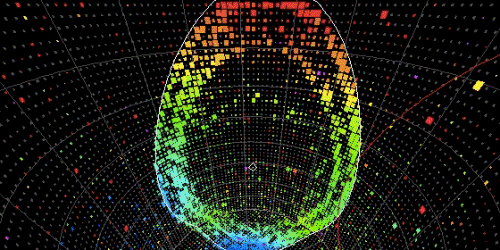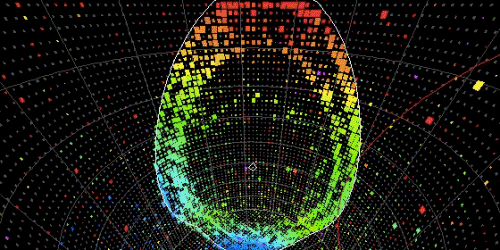Inching Closer to CP Violation in Neutrinos
Nature must treat matter and antimatter differently, otherwise the early Universe would have created both in equal amounts. However, most particles obey “CP symmetry,” which states that the laws of physics are the same if a particle is swapped with a mirror reflection of its antiparticle. Quarks violate this symmetry but not by enough to explain matter’s dominance over antimatter. Now, researchers with the T2K Collaboration report with improved statistical confidence that CP symmetry is violated in neutrinos.
Neutrinos and antineutrinos come in three different flavors—electron, muon, and tau—and can change from one flavor to another. If CP symmetry is respected, then neutrinos and antineutrinos should have the same probability of making this change. To see if this symmetry holds, the T2K team has been firing beams of muon neutrinos and antineutrinos from the J-PARC facility in Japan to the Super-Kamiokande neutrino detector, 295 km away (see 10 February 2014 Viewpoint). There, they tally how many muon neutrinos morphed into their electron counterparts en route.
In data collected from 2010 to 2017, the team detected 89 electron neutrinos and 7 electron antineutrinos. These counts should have been closer to 68 and 9, respectively, if CP symmetry had been unbroken. This discrepancy indicates CP violation within a 95% confidence interval (2 sigma). That’s up from 90% reported last year, thanks to more data and improved analysis techniques.
The team stresses that with so few detections, their uncertainties are still large. They will continue the experiment for another five years, during which time they expect to accumulate 2.5 times as much data as they currently have, in order to see if their latest result holds up.
This research is published in Physical Review Letters.
–Christopher Crockett
Christopher Crockett is a freelance writer based in Arlington, Virginia.





